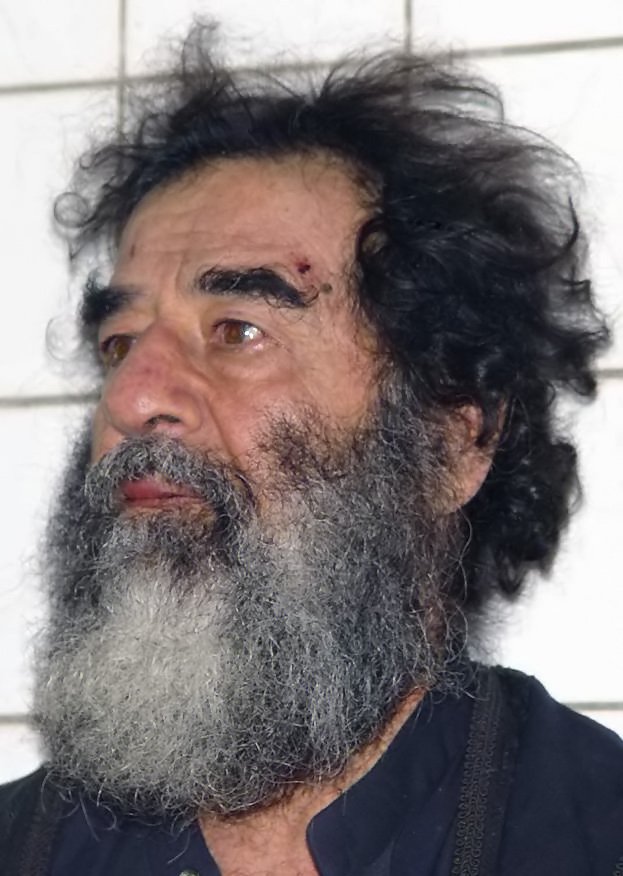In the annals of history, certain events stand out as pivotal moments that shape the course of nations. The capture of Saddam Hussein on December 13, 2003, is one such event. This dramatic turn of events unfolded near his hometown of Tikrit and marked a significant milestone in the Iraq War.
Before delving into the details of Saddam Hussein’s capture, it is essential to understand the historical context that led to this momentous event. In March 2003, a coalition led by the United States launched an invasion of Iraq with the primary objective of removing Saddam Hussein from power. The justification for this invasion was based on the belief that Iraq possessed weapons of mass destruction, which posed a threat to regional and global security.
However, as the war unfolded, it became increasingly clear that the intelligence regarding Iraq’s weapons of mass destruction was flawed. Nevertheless, the coalition forces continued their efforts to stabilize the country and restore order. Saddam Hussein, aware of the imminent threat to his regime, went into hiding.
For months, a relentless manhunt ensued, with intelligence agencies and military forces tirelessly searching for Saddam Hussein. Finally, on that fateful day in December 2003, U.S. forces acting on a tip from an informant closed in on a farmhouse near Tikrit, where they believed Saddam Hussein was hiding.
The operation to capture Saddam Hussein was meticulously planned, with a combination of intelligence gathering, surveillance, and coordination between various military units. As the U.S. forces surrounded the farmhouse, they faced resistance from loyalists and supporters of Saddam Hussein. However, their determination and superior firepower prevailed, and after a brief firefight, they apprehended the former Iraqi leader.
The news of Saddam Hussein’s capture spread like wildfire, both in Iraq and around the world. The event was hailed as a major victory for the coalition forces and a turning point in the Iraq War. It symbolized the fall of Saddam Hussein’s regime and raised hopes for a more stable and democratic Iraq.
Following his capture, Saddam Hussein was handed over to Iraqi authorities to face justice for his crimes against humanity. In October 2005, he stood trial before the Iraqi High Tribunal, charged with crimes committed during his brutal reign, including the massacre of thousands of Kurds and the suppression of political dissent.
The trial, marred by controversy and security concerns, lasted for over a year. On November 5, 2006, Saddam Hussein was found guilty and sentenced to death by hanging. Despite international calls for clemency, the sentence was carried out on December 30, 2006.
The capture and subsequent trial of Saddam Hussein brought closure to the Iraqi people who had suffered under his tyrannical rule for decades. It also served as a message to other dictators and human rights violators that they would be held accountable for their actions.
The significance of Saddam Hussein’s capture cannot be overstated. It marked a turning point in the Iraq War and signaled the beginning of a new chapter for Iraq. However, it also unleashed a series of complex challenges, including sectarian violence and insurgency, which would continue to plague the country for years to come.
Today, the capture of Saddam Hussein remains a defining moment in modern history. It serves as a reminder of the consequences that dictators face when they oppress their people and violate international norms. The legacy of Saddam Hussein’s regime and the Iraq War continues to shape the geopolitical landscape of the Middle East.
References:
1. BBC – Capture of Saddam Hussein
2. History.com – Saddam Hussein Captured
3. CNN – Saddam Hussein Execution
SEO Excerpt:
The capture of Saddam Hussein in 2003 marked a significant milestone in the Iraq War. This article provides a comprehensive overview of the event, its historical context, and the subsequent trial and execution of Saddam Hussein. Learn more about this pivotal moment in modern history and its lasting impact on Iraq and the Middle East.

